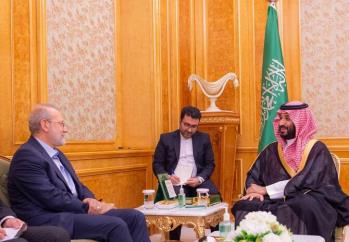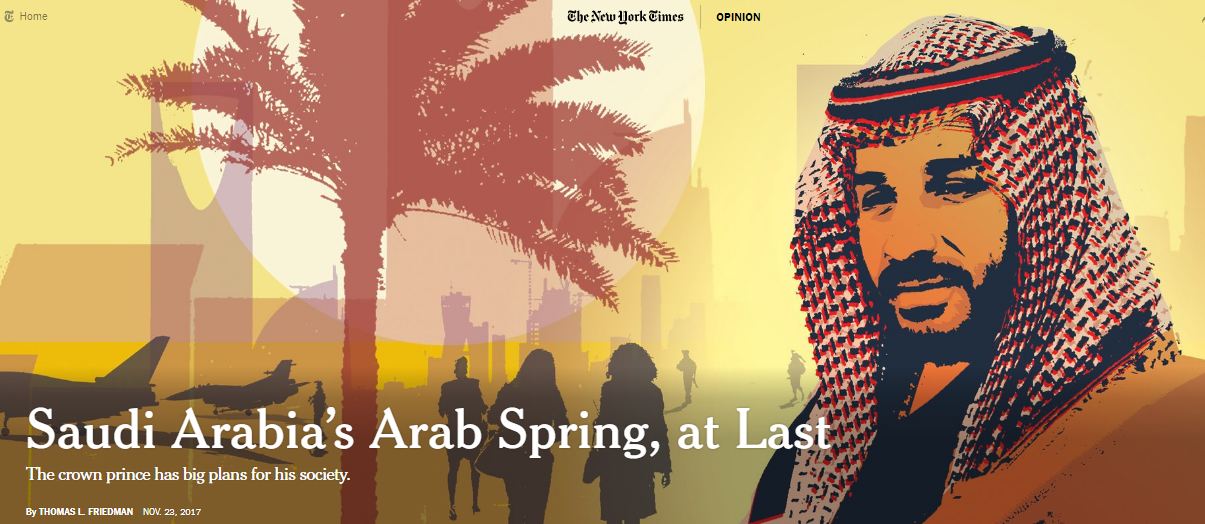Alwaght- New York Times' column that has portrayed as a reformist Saudi crown prince Mohammed bin Salman, who is personally leading a bloody aggression on neighboring Yemen, has attracted quite a backlash from well known journalists.
The American newspaper's star columnist Thomas Friedman, in a gushing profile of 32-years-old crown prince, praised him as the architect of the country’s “Arab Spring,” who intends to return the retrogressive Arab state to moderate Islam and fight corruption.
The inexperienced Saudi prince, the de facto leader of the oil-rich Persian Gulf kingdom, is internationally blamed for launching and continuing the 3-year war on Yemen and killing more than 13,000 civilians, mostly children and women.
The Saudi-led military coalition has been continuously pounding Yemen since March 2015 in an attempt to crush the popular Ansarullah movement and reinstate the former fugitive president, Abd Rabbuh Mansur Hadi, a staunch ally of the regime in Riyadh.
According to Save the Children aid organization, at least 130 children die every day in Yemen from extreme hunger and disease–one child every 18 minutes as a US-backed Saudi aggression on the impoverished state continues.

People recover the bodies of two children from under the rubble of a house destroyed by a Saudi-led air strike in Sanaa, Yemen August 25, 2017
Despite all international criticisms against Saudi crown prince, who is also the defense minister of Saudi regime, Friedman who visited, Mohammed bin Salman (MBS) in Saudi capital, Riyadh, where “several senior ministers” treated him to “different lamb dishes” in the House of Saud’s “ornate adobe-walled family palace” and “wore him out with a fire hose of new ideas about transforming his country” adopted a relentlessly positive tone towards MBS in his 23 November article.
"Now they have a young leader who is driving religious and economic reform, who talks the language of high tech, and whose biggest sin may be that he wants to go too fast. Most ministers are now in their 40s — and not 60s. And with the suffocating hand of a puritanical Islam being lifted, it’s giving them a chance to think afresh about their country and their identity as Saudis," writes Friedman, who reminds the audience of his own early journalistic career as a West Asia (Middle East) correspondent.
"Unlike the other Arab Springs — all of which emerged bottom up and failed miserably, except in Tunisia — this one is led from the top down by the country’s 32-year-old crown prince, Mohammed bin Salman, and, if it succeeds, it will not only change the character of Saudi Arabia but the tone and tenor of Islam across the globe. Only a fool would predict its success — but only a fool would not root for it," NY Times' star columnist goes on hailing MBS.
Friedman evidently probed “M.B.S.” on several hot-button issues, such as the Saudi-engineered political crisis in Lebanon, the humanitarian cost of the war in Yemen. Each time, the Saudi royal, who have assumed control of the country from his father, King Salman, is allowed to state his views unchallenged.
For all his spirit of openness, Mohammed bin Salman refuses to talk about the supposed detention of Lebanese premier in Riyadh and his forced resignation, bats away questions about Yemen by saying that the war against the impoverished nation is nearly won.
After being roundly criticized in the comments, the 2,700-word profile then immediately went viral, provoking a fierce among people.
Russia Today gathered reactions from some high-profile journalists and many of the leading experts on the region.
The Intercept journalist Glenn Greenwald in fact thought that the Saudis couldn't even pay the NYT for such positive coverage.

But according to Shane Bower, of Mother Jones, sometimes paid-for tours that end with lamb dinners in gilded palaces work better than any paid advertising.

Adam H. Johnson, who writes for the LA Times, also noted the quality of Friedman's research.

Journalist Michael Tracey thought the integrity and balance of the New York Times piece should be compared with the alleged ceaseless bias exhibited by RT.

But then again, PRI's Richard Hall noted that the "newspaper of record" knows what it's doing.

While some shared jokes, others, such as AFP's Sarah Hussein and freelancer David Klion, were genuinely offended.

The Daily Beast's Paul Gottinger noted that there had already been an Arab Spring in Saudi Arabia, whose details go strangely unmentioned by the New York Times.

Murtaza Mohammad Hussein of the Intercept thought that the feature was informative and useful, albeit not necessarily in the way Friedman was intending.

But perhaps the most damning response – and the most embarrassing for Friedman – was from Abdullah al-Arian, assistant professor of history at Georgetown University. He simply pulled out a dozen eerily similar rhapsodies from the New York Times over the past century, each time vowing that the new Saudi ruler – however backward he turned out to be in hindsight –would be a reformer who would bring democracy and fairness to the Gulf State. And just like Friedman today, there was always an excitable journalist, convinced that he had received precious insight straight from the horse's mouth, and ready to regurgitate it into the world.




























